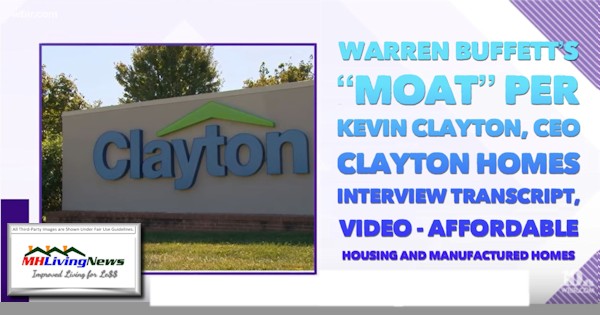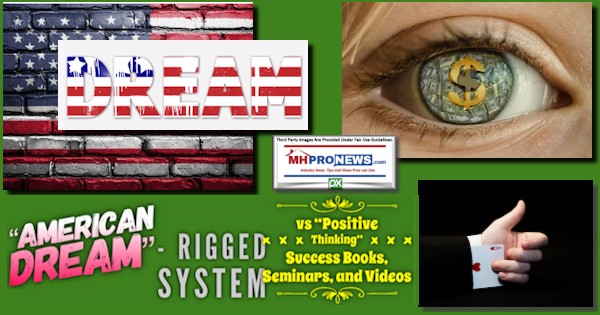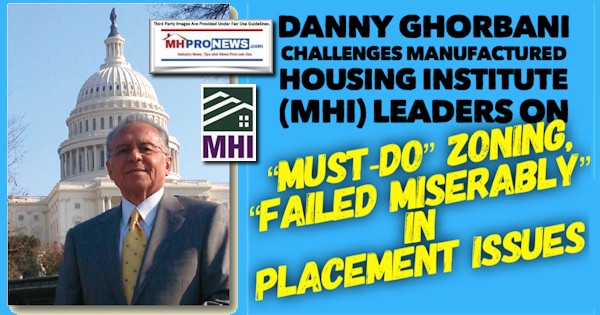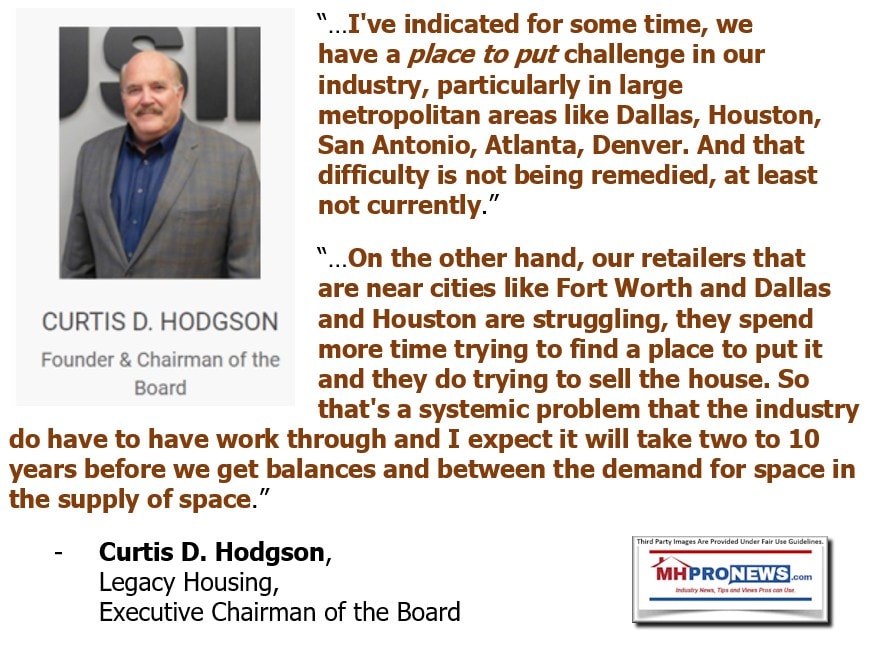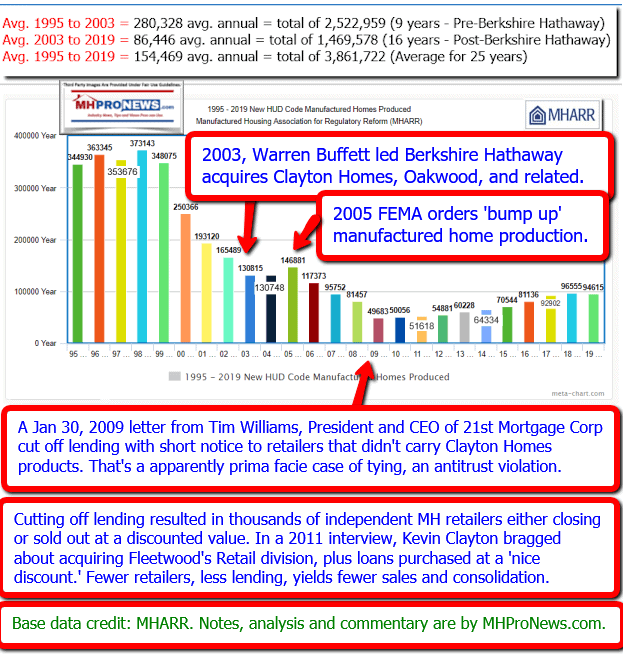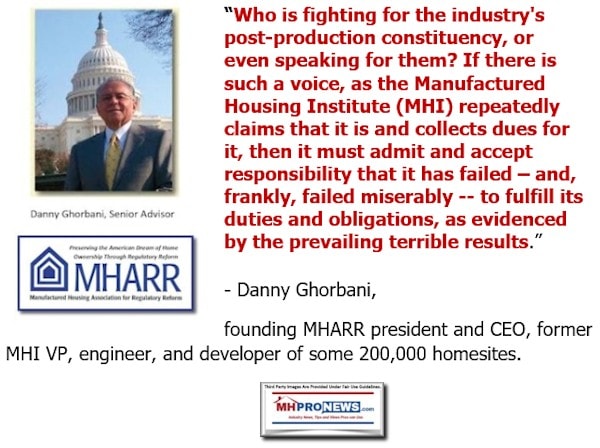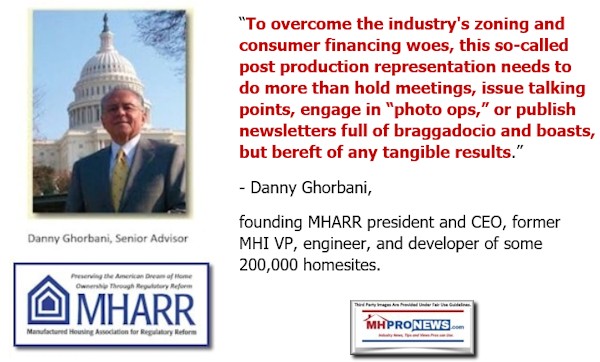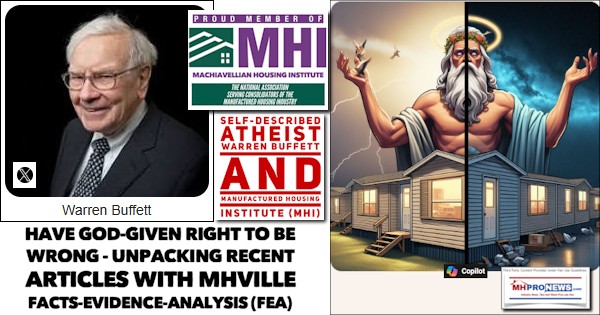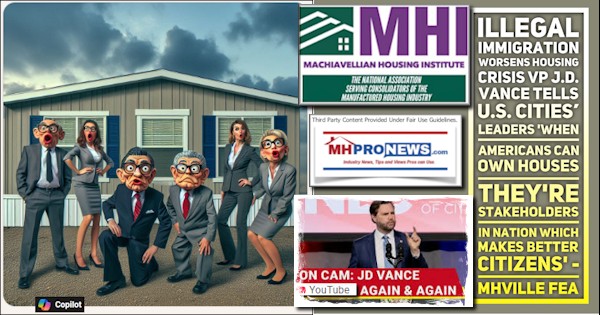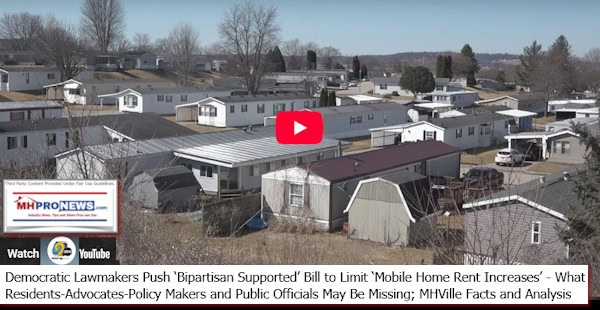For those into affordable housing issues and how zoning continues to confront America, or who are specifically in the manufactured home field, there may be no single association leader who has more experience than Danny Ghorbani has. Certainly, no one at the Manufactured Housing Institute (MHI) at a senior position comes close to Ghorbani’s roughly 5 decades of experience, which may rival or surpass MHI’s key staffers combined industry experience. He served as an MHI VP, had years of trade show experience, and is the founding President and CEO of the Manufactured Housing Association for Regulatory Reform (MHARR). Not to be overlooked is Ghorbani’s engineering background. Engineers deal in hard realities and facts, not mere emotions, or fanciful whims. For instance, Ghorbani led an effort that resulted in the creation of some 200,000 new homesites for our industry, per the RV MH Hall of Fame’s website, which Ghorbani was inducted into in 2004.
Prior Manufactured Housing Executives Committee (MHEC) leader and MHI member Mary Gaiski said that the issue of zoning and placement has gotten worse.
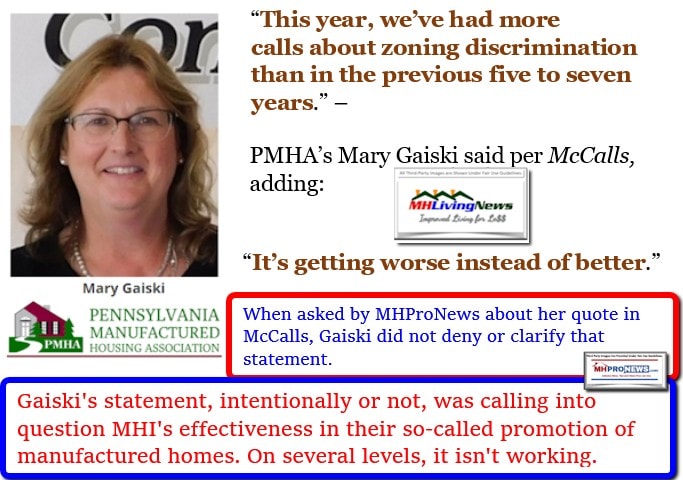
It is MHI member Curt Hodgson who said that manufactured housing faces a “place to put” crisis. In response to the failure of the post-production side of the industry’s failure to successfully address these issues, their firm is developing their own homesites, but not all independents are in a position financially to do the same.
That’s sufficient background to set the stage for the significance of the exclusive Q&A between Ghorbani and MHProNews on the issue of zoning and placement. This new Q&A will be followed by related information.
MHProNews Q&A With Danny Ghorbani
DISCRIMINATORY AND EXCLUSIONARY ZONING LAWS
MHProNews Question
Discriminatory and exclusionary zoning laws against manufactured housing throughout the United States are causing hardships for affordable housing seekers as well as pressures, loss of business and related anxieties among industry members. That is particularly true among the industry’ independent retailers, specific communities, developers and finance companies. Similar to our previous Q&A regarding consumer financing for mainstream HUD Code manufactured homes, there are several questions on this key issue that needs to be addressed and understood. But to begin with, I’d appreciate it if you would provide our readers with a thumbnail sketch as to the overall aspects and importance of discriminatory and exclusionary zoning. Also explain why the industry has been locked in its current predicament with zoning and placement for so long?
Danny Ghorbani’s ANSWER

You are right on target with your question, which puts the spotlight squarely on an issue that should be right at the top of the industry’s “must-do” list of reform priorities, but, unfortunately, is not. The reality is that if there is one factor that continues to block the progress and advancement of the manufactured housing industry from achieving its full potential as the only source of affordable, non-subsidized and quality homeownership for millions of moderate and lower income Americans, it is — by far — the imposition of discriminatory and exclusionary zoning laws on the industry’s homes and the purchasers of those homes by state and local governments. It is very simple to grasp this from a potential homebuyer’s point of view, because if he/she cannot place a manufactured home on a piece of land, the potential consumer will simply not buy it. Thus, the industry’s huge zoning predicament.
This, added to the continuing lack of readily available consumer finance at affordable and truly competitive interest rates, have devastated the growth of the industry and placed potential homebuyers in an untenable situation, with no end in sight. These two glaring failures have created a bottleneck in the marketplace between manufacturers, who can easily expand their production and meet any and all consumer demands for today’s quality manufactured homes, and potential home buyers who are ready and willing to purchase these homes, but can’t finance and place them. In short, our industry’s very unique network of distribution (i.e., retailers and consumer finance) and placement (i.e., communities) that has served consumers very well, and has given the industry a distinct advantage over other types of housing (i.e., site-built) in the affordable housing marketplace, are slowly being “squeezed” and are gradually disappearing.
So, while industry manufacturers can and do aggressively fight and win regulatory battles at the national level regarding the production of their homes (thanks to the formation of the Manufactured Housing Association for Regulatory Reform — MHARR — in 1985), the industry is impotent, hapless and unable to fight and win its battles regarding post-production issues – i.e., issues arising after the home leaves the factory, because there is no collective, independent national entity out there that is willing and able to fight specifically for the Post Production sector.
The lack of such a collective, independent national representation for the industry’s post production sector (comprised of retailers, communities, developers and finance companies) — particularly in this age of specialized representation — should be unacceptable to these constituencies. And this is particularly the case for an industry which is comprehensively federally-regulated under a law that empowers and establishes a unique partnership between the federal and state governments, and which is based on the three main principles of federal preemption, a uniform code and uniform enforcement that have served to establish our industry as the nation’s main source of affordable housing.
Is there any wonder then that the industry’s zoning situation and consumer financing are such a shambles? The industry’s production has been stuck under 100,000 homes annually since 2006 not because manufacturers cannot produce the modern, high-quality, affordable homes that consumers want (and need), but because zoning and consumer financing for such mainstream manufactured homes are in disarray and chaos.
Who is fighting for the industry’s post-production constituency, or even speaking for them? If there is such a voice, as the Manufactured Housing Institute (MHI) repeatedly claims that it is and collects dues for it, then it must admit and accept responsibility that it has failed – and, frankly, failed miserably — to fulfill its duties and obligations, as evidenced by the prevailing terrible results.
How did the industry get to this point? Unfocused, unprepared, bumbling and without any vision or plan of action to fight – matched with a determination to win?
To overcome the industry’s zoning and consumer financing woes, this so-called post production representation needs to do more than hold meetings, issue talking points, engage in “photo ops,” or publish newsletters full of braggadocio and boasts, but bereft of any tangible results. There also needs to be fewer legislative and other alleged “partnerships” with the industry’s foes and competitors (i.e., site-built housing) who would do anything and everything in their power to taint, diminish and cut-down-to-size the manufactured housing’s exceptionalism as the Nation’s main source of affordable housing. These sorts of shallow activities may sound and look good in promotional materials sent to its membership, but they’ve done absolutely nothing tangible to correct the industry’s persistent twin problems of zoning and consumer financing — again, as demonstrated by the prevailing terrible results.
The good news is that — as with the consumer finance that we discussed previously — there are those in the industry who have taken action and continue to press hard and fight aggressively against these discriminatory and exclusionary zoning laws. For example, there are several industry state associations that have individually done a great job on these zoning matters. And I know for a fact that MHARR, (even as a “manufacturers only” association and with absolutely no post-production funding support) has — and continues — to hammer this issue on a national stage, utilizing the “enhanced preemption” language of the 2000 reform law, which MHARR (in partnership with the late Will Ehrle, then president and general counsel of the Texas Manufactured Housing Association) was largely instrumental in writing.
The relevant details of all these issues can and will be addressed in future Q&A sessions, but, for the time being, let this answer to your initial question serve as a wake-up call — that unless something very drastic occurs to change and reverse the dynamics of the industry’s rapidly-accumulating losses in zoning and consumer financing, the industry’s retailers, communities, developers and financing companies, can rest assured that their views, interests and advancement are being poorly served.
##
MHProNews Additional Information, Analysis, and Commentary
Manufactured housing faces several challenges that because they are unresolved have grown worse in recent years. The evidence for that claim is clear. Because despite remarkably low numbers of claims to HUD for dispute resolution – a tiny fraction of one percent – the industry’s products are misunderstood, often defamed, disparaged, and discriminated against. Professor Lisa Tyler said as much in her doctoral dissertation.

The recent shipment and production trends reflects that for much of 2018, 2019, and 2020, the industry has been undergoing a year over year decline in production. See the latest data below.
Manufactured Housing Industry Production Dip, Top Shipment States Data – June 2020
Despite reams of useful third party studies, MHI inexplicably fails to cite those sources on their own website. Examples are found in the report that can be accessed via the linked image and headline below.
Put differently, MHI leadership is either incompetent, corrupt, and/or has conflicting interests. Indeed, an MHI whistleblower has provided documentary evidence of such. There are not only outside critics to MHI, there are clearly voices past and present from the Arlington, VA based MHI trade group that have lost faith with their efforts.
Whistleblower’s Documents on Lesli Gooch – Manufactured Housing Institute CEO – New Discoveries
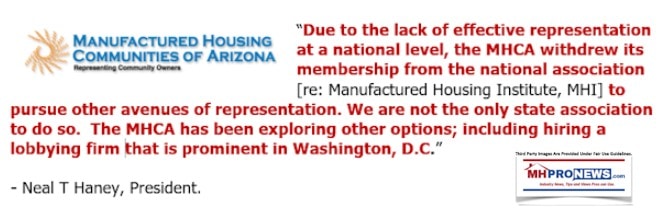
MHARR has been fighting a battle against a larger and better funded association within our industry. It is a tragic reality that most outside of our industry would not realize exists.
While MHI uses their lobbying dollars to buy them access, their “coalition” with other housing associations demonstrates that they often take public positions that defy common sense.
Thus, Ghorbani’s insights on zoning, placement and financing issues are useful to grasping the predicament that affordable manufactured home advocates, professionals, and independent investors faces. See the previous Q&As on financing linked below.
The stage is being set for the evidence-based next steps of the industry’s recovery, regardless of who wins in November’s general election.
“To overcome the industry’s zoning and consumer financing woes, this so-called post production representation needs to do more than hold meetings, issue talking points, engage in “photo ops,” or publish newsletters full of braggadocio and boasts, but bereft of any tangible results,” said Ghorbani. That echoes MHARR’s current president, Mark Weiss on the post-production theme.
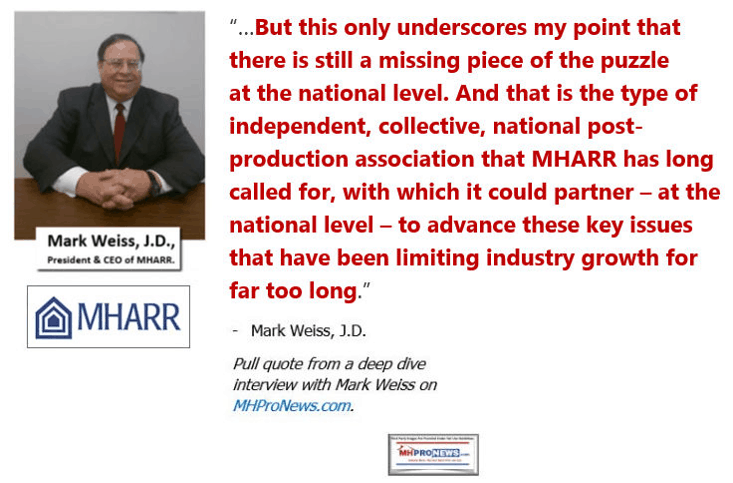
There are an array of voices inside and outside of MHI that directly or obliquely faults the Arlington-based trade group for its failures to properly represent the interests of independents which in turn hurts consumer interests too. That said, not many have anything like Ghorbani’s longevity.
“MHI Lies, Independent Businesses Die” © – True or False? – Berkshire’s Joanne Stevens Strikes Again


Stay tuned for more of what is ‘behind the curtains’ as well as what is obvious and in your face reports. It is all here, at the runaway largest and most-read source for authentic manufactured home “Industry News, Tips, and Views Pros Can Use” © where “We Provide, You Decide.” © ## (Affordable housing, manufactured homes, reports, fact-checks, analysis, and commentary. Third-party images or content are provided under fair use guidelines for media.) (See Related Reports, further below. Text/image boxes often are hot-linked to other reports that can be access by clicking on them.)

By L.A. “Tony” Kovach – for MHProNews.com.
Tony earned a journalism scholarship and earned numerous awards in history and in manufactured housing.
For example, he earned the prestigious Lottinville Award in history from the University of Oklahoma, where he studied history and business management. He’s a managing member and co-founder of LifeStyle Factory Homes, LLC, the parent company to MHProNews, and MHLivingNews.com.
This article reflects the LLC’s and/or the writer’s position, and may or may not reflect the views of sponsors or supporters.
Connect on LinkedIn: http://www.linkedin.com/in/latonykovach
Related References:
The text/image boxes below are linked to other reports, which can be accessed by clicking on them.
